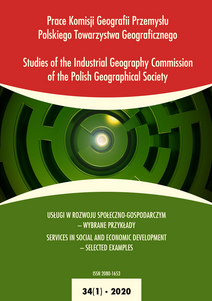Klasyfikacje krajów Unii Europejskiej z uwagi na struktury zatrudnienia w sektorach i wybranych sekcjach – ocena zgodności podziałów
Classification of European Union Countries Based on Employment Structure in Sectors and Selected Sections – Assessment of Similarity of Divisions
Author(s): Małgorzata Markowska, Danuta StrahlSubject(s): Labor relations, EU-Accession / EU-DEvelopment, Human Resources in Economy
Published by: Wydawnictwo Uniwersytetu Komisji Edukacji Narodowej w Krakowie
Keywords: employment; EU countries; European Union; sections; structures;
Summary/Abstract: The aim of the paper is to analyse and evaluate the relation between sector employment structure (sectors are as follows: 1. Agriculture, forestry and fishing; mining and quarrying; 2. Manufacturing; 3. Electricity, gas, steam and air conditioning supply; water supply and construction; 4. Services) and employment structure at selected high technology and knowledge-intensive employment sections in European Union countries. Complete linkage method was used to cluster countries characterised by sector and section employment structures separately, for sector and section structures, and for 2008 and 2018. Respectively 8 and 6 groups of countries in those years have been found with respect to sector structure, while 8 and 9 for high technology and knowledge-intensive sections. Divisions have been compared with Sokołowski’s (1976) measure similar to Rand index. The results are as follows: sector structures between 2008 and 2018 – 0.839; section structures between 2008 and 2018 – 0.913; between sector and section structures in 2008 – 0.704; between sector and section structures in 2018 – 0.807.
Journal: Prace Komisji Geografii Przemysłu Polskiego Towarzystwa Geograficznego
- Issue Year: 34/2020
- Issue No: 1
- Page Range: 7-19
- Page Count: 13
- Language: Polish

